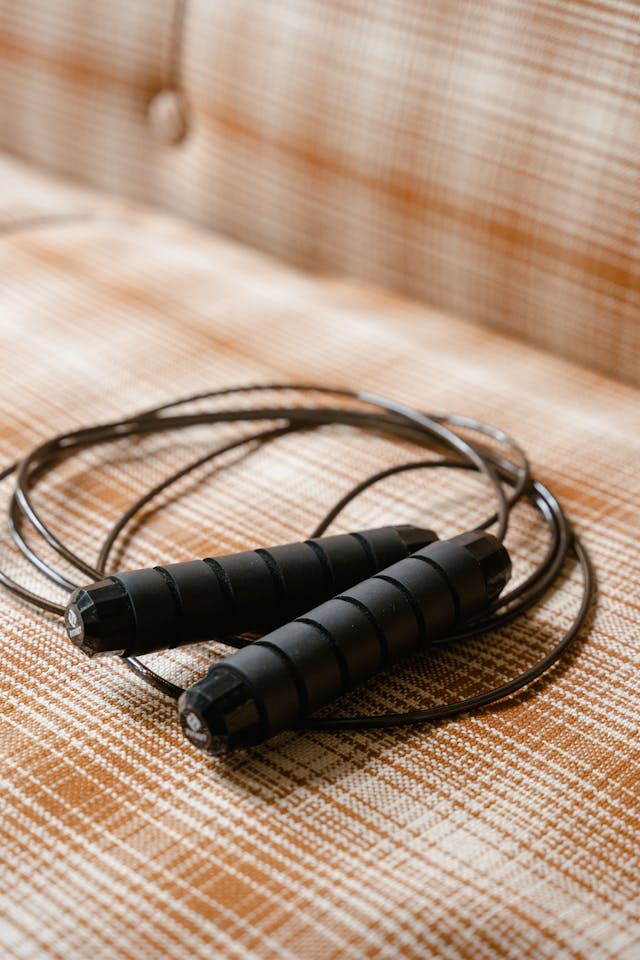Fitting in Your Own Training: Tips for Balancing Workouts and Daily Life
Finding time for training can feel like a daunting task, especially with a busy schedule. You might be wondering how to balance work, family, and fitness without feeling overwhelmed.
The key to successfully fitting in your own training lies in prioritizing short, effective workouts that align with your lifestyle and goals.
By breaking your exercise routine into manageable segments and integrating fitness into your daily activities, you can create a sustainable plan. Whether it’s a quick morning workout or a lunchtime jog, discovering what works for you makes all the difference.
With the right approach, you can transform your routine into an enjoyable part of your day.
Remember, it’s not about finding hours to train but rather making the most of the time you do have. With a little creativity and commitment, you can achieve your fitness goals while maintaining the balance you seek in life.
Understanding Personal Training
Personal training is a key component in designing a fitness regimen tailored specifically for you. It helps you navigate the complexities of exercise choices and methodologies that align with your goals and lifestyle. Key aspects include understanding individualized fitness approaches and establishing realistic, achievable objectives.
The Basics of Individualized Fitness
Individualized fitness focuses on your unique needs and circumstances. This means creating a workout plan that reflects your fitness level, preferences, and any specific limitations you may have.
To begin, assess your current fitness level. Ask yourself:
- What are my strengths?
- Where do I need improvement?
- What activities do I enjoy?
With this self-assessment, you can better tailor your training. If you love running but struggle with strength training, consider incorporating short, efficient strength sessions into your routine.
Working with a personal trainer can provide additional guidance, but you can also identify what works best through trial and error. Craft a plan that is dynamic to help you stay motivated.
Setting Realistic Goals
Setting realistic goals is crucial for your success. Goals should be specific, measurable, achievable, relevant, and time-bound (SMART).
For example:
- Specific: Instead of saying, “I want to get fit,” aim for “I want to run a mile in under 10 minutes.”
- Measurable: Track your progress by noting improvements in distance or weight lifted.
- Achievable: Ensure your goals are feasible based on your current level. Overly ambitious targets can lead to frustration.
- Relevant: Align your goals with your personal interests, making it easier to remain committed.
- Time-bound: Set a deadline to create urgency and motivation.
By following the SMART method, you can set clear benchmarks. Celebrate small milestones along the way, as these will keep you motivated and engaged in your personal training journey.
Designing Your Workout Plan
Creating a personalized workout plan is essential for achieving your fitness goals. You’ll want to understand where you currently stand, select appropriate exercises, and find the right balance between intensity and volume.
Analysing Your Current Level
Start by assessing your fitness level. Ask yourself key questions:
- What are your current strengths?
- Are there areas that need improvement?
- How frequently do you exercise now?
Consider conducting a fitness test. This can include measuring how many push-ups or squats you can do in a minute or determining your run time for a mile.
Document your findings. Recognizing what you can do now helps you set realistic goals. It’s also important to consider any injuries or limitations that may affect your routine. Understanding your baseline will guide your subsequent choices and help you track progress over time.
Exercise Selection and Variation
Choose exercises that align with your goals and preferences. If you enjoy what you’re doing, you’re more likely to stick with it. Consider including:
- Strength training: Exercises like squats, deadlifts, and bench presses.
- Cardio: Activities such as running, cycling, or swimming.
- Flexibility training: Incorporating yoga or stretching.
Variation is key to preventing plateaus and keeping workouts engaging. You might rotate exercises every few weeks, change your workout order, or adjust the equipment used. This approach not only keeps things fresh but also challenges different muscle groups, allowing for comprehensive fitness development.
Balancing Intensity and Volume
Finding the right balance between intensity and volume is crucial for effective training. Intensity refers to how hard you work during exercises, while volume refers to the total amount of work done (sets, reps, and duration).
To strike the right balance:
- Increase intensity gradually: Use heavier weights or more challenging variations.
- Manage volume: If you up the intensity, consider reducing the number of sets or reps to avoid overtraining.
On a weekly basis, you might aim for a mix: alternate heavy lifting days with lighter cardio sessions. This approach ensures your body has time to recover while still challenging it appropriately. Keeping track of your sessions helps you identify what works best for you.
Nutrition and Recovery Strategies
Focusing on nutrition and recovery is essential for optimizing your training. By understanding what to eat, staying hydrated, and incorporating proper rest, you can enhance your performance and aid recovery effectively.
Eating for Performance
The right nutrition fuels your workouts and assists in faster recovery. Prioritize carbohydrates, as they provide the energy needed for training sessions. Aim to consume complex carbohydrates like whole grains, fruits, and vegetables.
Include a source of protein in your post-workout meals, such as lean meats, fish, or plant-based options like beans and lentils. Protein helps repair muscle tissues that get damaged during intense exercise.
Don’t forget healthy fats. Foods like avocados, nuts, and olive oil support hormone production and overall health. Consider a balanced meal plan that incorporates these nutrients to sustain your energy levels throughout your training regimen.
Importance of Hydration
Staying hydrated is crucial for performance and recovery. Dehydration can lead to fatigue, muscle cramps, and decreased coordination.
Make it a habit to drink water before, during, and after your workouts.
For longer training sessions, consider incorporating electrolyte drinks. These can replenish essential minerals lost through sweat and help maintain your electrolyte balance.
A simple way to check your hydration status is by observing the color of your urine. Light yellow indicates proper hydration, while dark yellow suggests you need to drink more fluids. Aim for at least 8-10 glasses of water daily, adjusting based on your activity level.
Rest and Recovery Essentials
Rest is just as important as your workout routine. Your muscles need time to heal and grow stronger after exercise.
Aim for 7-9 hours of quality sleep each night to support recovery.
In addition to sleep, consider including rest days in your training schedule. These allow your body to recover, reducing the risk of injuries. You might also explore various recovery techniques, such as foam rolling or gentle yoga, to enhance flexibility and relieve muscle tension.
Pay attention to how your body feels. If you notice excessive soreness or fatigue, it may be a sign to adjust your training intensity or schedule more rest. Prioritizing recovery will ultimately lead to better performance in your fitness journey.
Tracking Progress and Adjusting
Effective training involves not only executing your workouts but also continuously monitoring and adjusting your plan. Keeping track of your progress ensures you stay motivated and achieve your fitness goals while avoiding plateaus.
Monitoring Your Workouts
To maximize your training, start by logging your workouts. This could be in a notebook, an app, or a spreadsheet. Record details like exercise type, duration, sets, and reps. This granular data provides insight into your performance trends.
Consider using a simple table format for clarity:
| Date | Exercise | Sets | Reps | Duration |
|---|---|---|---|---|
| Nov 1, 2024 | Squats | 3 | 10 | 30 mins |
| Nov 3, 2024 | Bench Press | 4 | 8 | 25 mins |
Regularly reviewing these logs can reveal patterns in your progress or areas needing improvement. Celebrate your achievements and identify where you might need to challenge yourself further.
When to Modify Your Plan
Adjust your training plan based on your progress and any changing goals. If you’re consistently hitting your targets, consider increasing intensity. This might mean adding weight, increasing reps, or reducing rest time.
Conversely, if you find yourself feeling fatigued or uninspired, it may be time for a change. Signs for modification include:
- Lack of progress or plateau
- Persistent fatigue or soreness
- Decreased motivation
Refreshing your routine can also keep your workouts engaging. Incorporate new exercises, change your workout split, or vary the training modality to stimulate muscle growth and maintain interest. Regular assessment is key to ensuring your training remains effective and enjoyable.
Staying Motivated and Consistent
Maintaining motivation and consistency in your training routine is essential for achieving your fitness goals. Focus on establishing habits that work for you and engaging with supportive communities to keep your spirits high.
Creating Sustainable Habits
Building sustainable habits begins with setting realistic goals. Instead of overwhelming yourself with dramatic changes, opt for small, achievable targets.
For example, start by dedicating just 15 minutes a day to exercise and gradually increase the duration as you feel more comfortable.
Try to establish a routine by scheduling workouts at the same time each day. Consistency helps you form a habit, making it easier to stick with your plan.
You can also track your progress, as seeing improvements can motivate you to continue. Consider using tools like fitness apps or journal entries to note your achievements, no matter how small. Remember, every step counts!
Community and Support Networks
Surrounding yourself with a supportive community can significantly boost your motivation.
Look for workout groups, online forums, or friends who share similar fitness goals. Sharing experiences and challenges with others creates a sense of accountability.
Consider joining local fitness classes or teams. Engaging with others in a communal environment can make workouts more enjoyable and push you to stay consistent.
You might find that participating in challenges, whether online or in person, keeps your motivation high.
These can include group runs or fitness competitions that encourage you to perform at your best while enjoying camaraderie.






